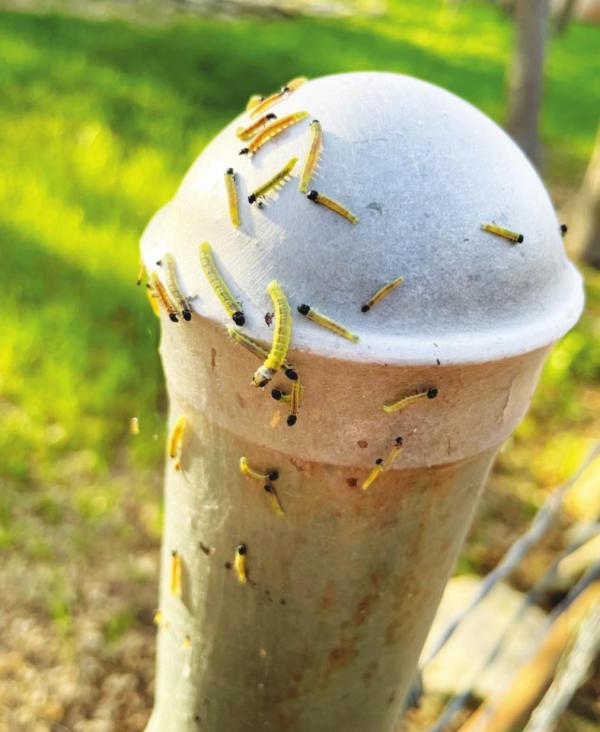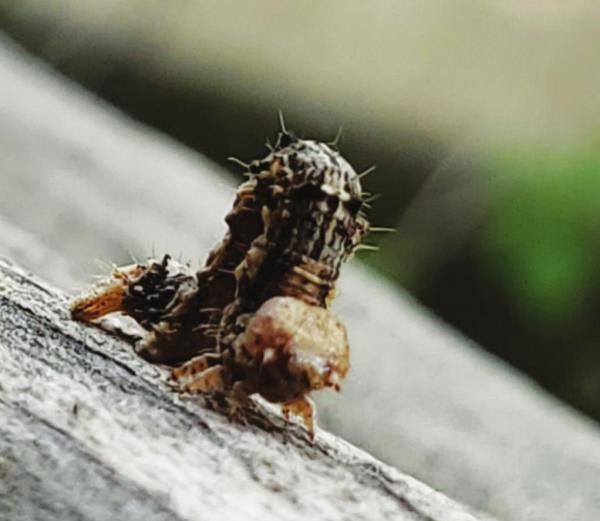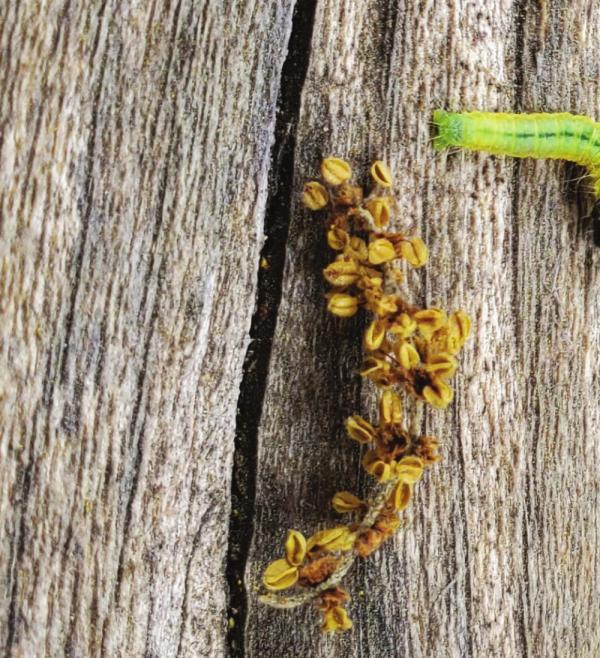WORM WARS
What are they? Where did they come from? Why are they here? And what on earth can I do about it?
As anyone who has walked outside in the last week knows, the once-in-a-generation “snowpocalypse” of February has dissipated into what would normally be a welcome and pleasant spring. However, the proverbial plague has simply metamorphosed into a never-ending dive bomb of caterpillars sliding down from the treetops.
Mother Nature is at work once again, and it appears there isn’t much to be done about our friendly-neighborhood caterpillars swinging through the streets of Wimberley besides wait and see.
Those pesky inchworms are the larvae of the Oak Leafroller Moth or Archips semiferana. They are a quarter-inch to one-inch long. The caterpillars feed on the new leaf growth and lay their eggs on the newly emerging twig branches of several different trees including hackberry, pecan, and walnut trees. But oak is the main dish in this neck of the woods, and the caterpillars are chowing down on the emerging foliage of each winter-damaged tree.
In May, the moths lay their eggs in the new tree growth. They remain there until it is time to hatch ten months away in March of the next year.
This kind of caterpillar spins they’re own silk, which is what gets stuck on your head or clothes. This process is actually a common occurrence, but this year’s caterpillar season does seem to be a bit more out of hand than typical.
“It’s just one of those years,” said Entomologist Elizabeth “Wizzie” Brown of the Texas AgriLife Extension Service in Austin. “Some years we have more, and some less. Also pockets of the larvae can be concentrated in some areas.”
One popular theory is that the freak freeze of February killed the natural predators of the caterpillars, so when they emerged just a few weeks later, their enemies have already moved on or were decimated by the temperatures.
“Not so,” said Brown. “The pupae wintered underground and there are no facts to support that theory.”
This isn’t necessarily a problem everywhere. Usually the hardest hit areas in Texas are Central and South Texas. Experts say they are usually harmless, but significant infestations on a given tree could cause issues.
“When a tree is defoliated during the growing season, it becomes stressed and occasionally serious damage can occur. Green leaves manufacture energy (sugar that is later converted into other carbohydrates) that allows the tree to grow and maintain its natural vigor,” an article published on the caterpillars by the Agrilife Extension office said. “Once a tree is defoliated, it essentially stops manufacturing sugar, which slows tree growth. Although deciduous trees (broad-leaved trees that generally lose their leaves each winter) can produce new leaves and stay alive for short periods, this process uses up their reserve food supply.”
If the infestation is damaging trees, there are some insecticides that are available to stop their spread. According to the Agrilife Extension office, Sevin and Bacillus Thurgicide are two, but the real suggestion is to just wait a few more days.
This is yearly cycle. While there maybe more of them than in the past, one thing EmilyAnn Theatre and Gardens has taught us is that caterpillars don’t hang around forever. By the beginning of May, most should have entered their pupal skin before emerging as an Oak Leafroller Moth. The only advice is to wear long sleeve shirts and broad-rimmed hats for the next week or two and then, those worms will be gone. Perhaps we should ready for the next plague, the Moths of May.
“It’s just one of those years,” said Elizabeth ‘Wizzie’ Brown of the Texas AgriLife Extension Service in Austin. “Some years we have more, and some less. Also pockets of the larvae can be concentrated in some areas.”




